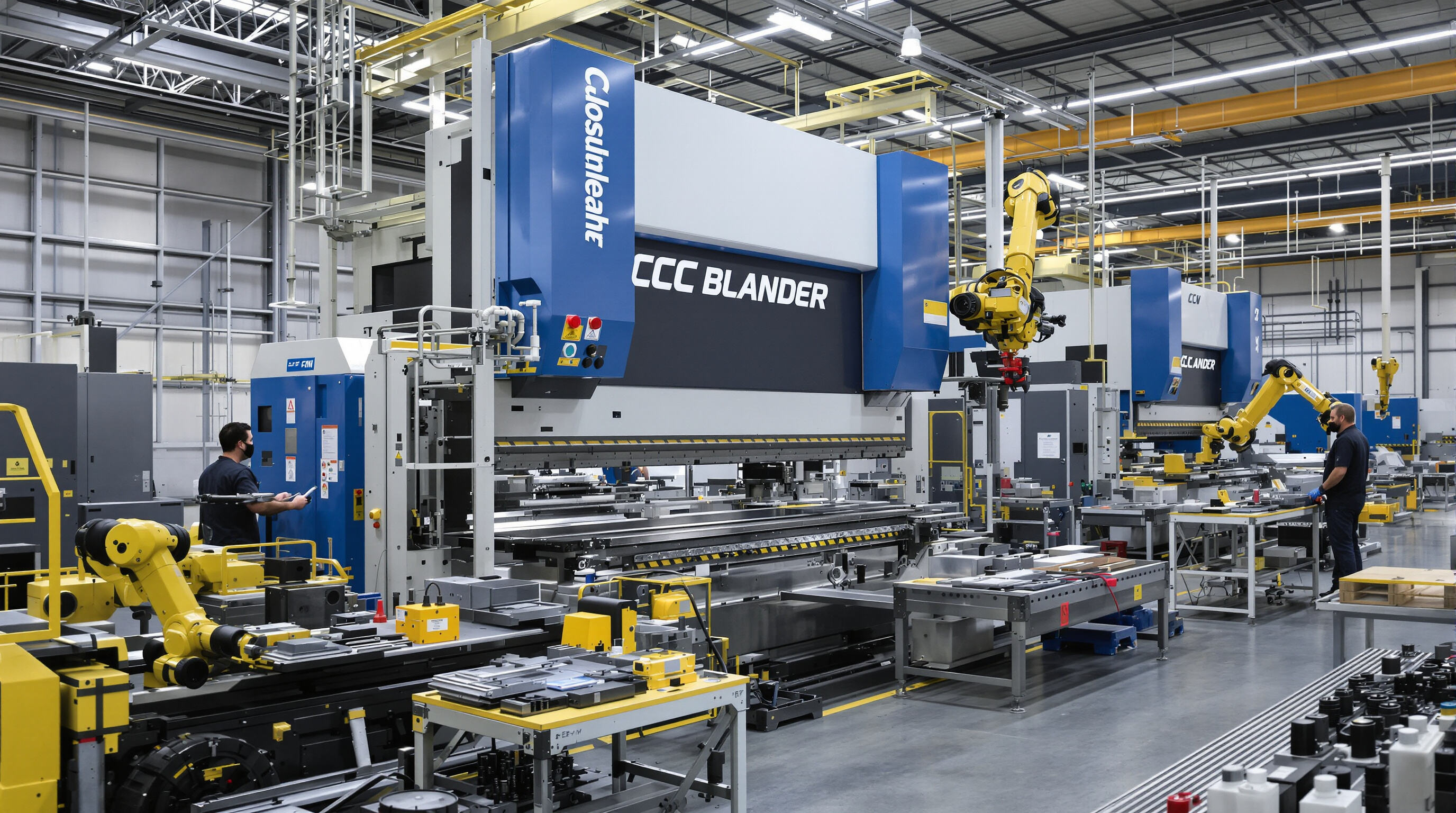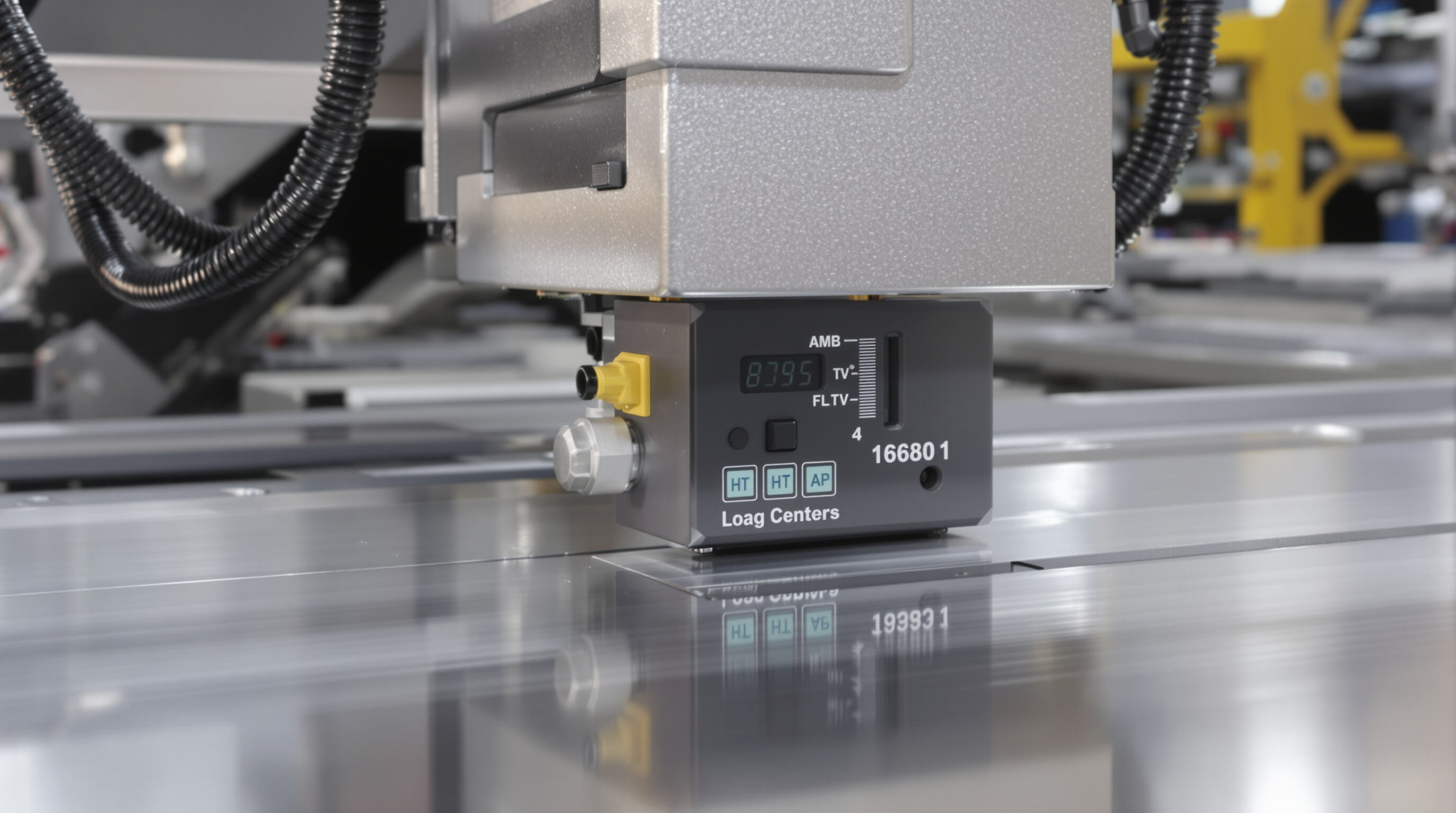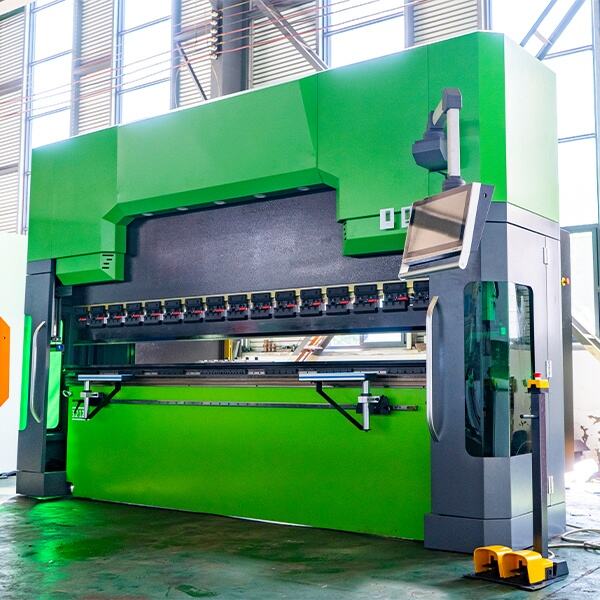Reducing Setup Time with Automation and Quick-Change Tooling

Automation and quick-change tooling systems are transforming CNC press brake efficiency by drastically reducing setup times and enabling seamless transitions between production runs. These innovations directly address the $270B in annual global manufacturing losses attributed to equipment downtime (Ponemon 2023), making them essential for high-speed, high-mix operations.
The Role of Automated Tool Changers in Reducing Setup Time
The introduction of automated tool changers has pretty much done away with those tedious manual die swaps we used to do all the time, and studies show they cut down on setup mistakes around 63% when compared with older techniques. With these standardized connections in place, most operators find they can switch tools in less than half a minute sometimes even quicker depending on what equipment they're working with, which is roughly 90% faster than going through the whole process manually. What makes this really valuable is how it meets those strict ISO 9015 requirements for precision while keeping bends accurate to within about plus or minus 0.1 degrees. That kind of consistency means parts come out right from the very first bend without needing constant adjustments later on.
Integration of Automatic Tool Changing for Continuous Production
When automatic tool changers work hand in hand with CNC controls, they can keep machines running at around 98% uptime across high end production cells. Factory floor data indicates that setup times have dropped by as much as 90% in practice, especially noticeable in auto manufacturing plants where machines often run non stop for 12 hours or more. What makes these systems so reliable? They consistently hold under half a millimeter repeatability on positioning, which means operators can walk away from the machine knowing it will still produce parts within spec even after hours of continuous operation.
Implementing Quick-Change Tooling Systems for Maximum Uptime
The new quick change tooling system featuring those tapered wedge locks brings down setup times dramatically. What used to take anywhere between 8 to 12 minutes now only takes around 15 to 25 seconds. That's a huge difference on the factory floor. With preset stations for tools ready before they're needed, workers can prep everything while machines are running elsewhere. This creates a nice flow where nothing sits idle for long periods. Machines spend about 40 fewer minutes waiting each shift compared to older methods. Add in some RFID tagged storage bins for tools and things get even better. Shop floor staff notice jobs turn around roughly 70 percent quicker when they know exactly where every tool is at all times. The whole production line moves much smoother in shops dealing with changing orders throughout the day.
Trends in Automation: From Manual to Fully Autonomous CNC Press Brake Cells
What we're seeing now is the move towards completely automated bending cells that bring together robot parts handling with smart AI for picking tools and optimizing processes. Some major improvements stand out lately. There's this self adjusting crowning compensation feature that makes a big difference. Also predictive monitoring for when tools start wearing down, so maintenance happens before problems occur. And then there's the automatic planning of bend sequences that saves tons of time. Shops that deal with over 50 different tool sets have found something remarkable. Changeover planning used to take around 45 minutes but now gets done in less than five minutes per job. This kind of speed means manufacturers can react much faster when designs get changed last minute or when customers want small batches produced quickly.
Case Study: Measured Setup Time Reduction in Automotive Component Manufacturing
One major automotive parts maker cut their yearly setup time by almost three quarters when they installed automated tool changers at 18 of their CNC press brake machines. The company spent around $2.1 million on this upgrade, which slashed tool change times down to just 31 seconds compared to the previous 8 and a half minutes. As a bonus, the quality improved too, with complex bracket production hitting a 94% first pass rate. Looking at the bottom line, they got their money back within 11 months thanks mainly to reduced waste and less overtime pay. This real world example shows that investing in automation isn't just about faster production speeds, but also makes good financial sense for manufacturers dealing with lots of different product variations day after day.
Optimizing CNC Controls and Bend Programming for Faster Cycles
Advanced CNC Controls for Repeatability and Reduced Setup Times
Today's CNC systems come equipped with high resolution encoders plus closed loop feedback mechanisms that can hit positional accuracy down to around 0.001 mm give or take. Getting this kind of precision really cuts down on those frustrating trial and error adjustments when setting things up. Most shops report saving somewhere between 30 to maybe even 50 percent of their configuration time compared to older equipment from back in the day. And there are some pretty cool features too, like real time crowning compensation that adjusts itself as materials vary in thickness. This means operators don't have to constantly check and tweak settings manually while running through big batches of parts, which keeps all those bend angles looking consistent from start to finish.
Programming Bend Sequences to Minimize Cycle Time
When shops arrange their bending operations strategically, they can really improve how tools move around the workpiece. By grouping similar bends together and cutting down on how often the ram needs to move, some manufacturers have seen their cycle times drop as much as 22%. A recent look at shop floor data from 2024 shows something interesting too. Factories that implemented AI-based nesting programs reported cutting wasted movement by nearly 37% when dealing with mixed product runs. Beyond just saving time, these smart programming approaches actually extend tool life, lower electricity bills, and get products out the door faster without compromising quality standards.
Synchronization Between CNC Controllers and Hydraulic Systems
High-speed servo valves and proportional pressure controls enable microsecond-level communication between CNC controllers and hydraulic systems. This tight integration eliminates lag, allowing press brakes to sustain 250+ strokes per hour while maintaining precise bend quality. The result is faster throughput without compromising repeatability or safety.
Real-Time Feedback Loops and AI-Driven Predictive Adjustments
Machine learning algorithms analyze variables such as material springback and tool deflection during operation, dynamically adjusting bend allowances. One automotive supplier reported a 19% reduction in scrap rates after implementing predictive correction systems, significantly reducing calibration cycles and material waste.
Enhancing Precision and Speed with Multi-Axis Backgauge Systems
Adjustment of Back Gauge for Precision and Speed
Modern CNC press brakes achieve micron-level accuracy through systematic backgauge calibration. Operators minimize positioning errors by fine-tuning linear guides and servo drives, accounting for material thickness and alignment. Proper gauge bar alignment ensures consistent contact points, critical for maintaining dimensional integrity across long production runs.
Backgauges and CNC Controllers: Ensuring Consistent Positioning
Closed-loop feedback synchronizes multi-axis backgauge movements with bend angle verification sensors, maintaining ±0.02mm repeatability even at high speeds. This integration is especially vital in aerospace applications requiring strict compliance with AS9100 standards, where even minor deviations can lead to costly rework or rejection.
Utilizing Multi-Axis Backgauge Systems for Complex Bending
Six-axis configurations support simultaneous adjustments for flanging, hemming, and offset bends, eliminating the need for multiple setups. Manufacturers using CNC-controlled multi-axis systems reduced complex job setup time by 32% compared to manual methods, according to the 2024 Precision Fabrication Report. This flexibility accelerates prototyping and low-volume production.
Case Study: Improving Throughput with Dynamic Backgauge Calibration
An automotive supplier reduced weld seam alignment errors by 41% after adopting laser-assisted backgauge calibration. The system’s real-time tilt compensation maintained positional accuracy across 18,000 door panel bends monthly, all while operating at 95% equipment utilization—demonstrating how precision engineering drives both quality and throughput.
Strategic Tooling Selection for High-Speed CNC Press Brake Efficiency
Tooling selection directly influences production speed, part accuracy, and operational costs. Matching punches and dies to material type, thickness, and bend specifications prevents trial-and-error adjustments and sustains tolerances under ±0.1 mm, ensuring efficient, repeatable workflows.
Matching Punches and Dies to Material and Bend Specifications
Thin-gauge aluminum requires small-radius tools to avoid cracking, while high-strength steels demand hardened dies with wider openings to resist deflection. Modern tooling charts simplify selection by correlating material properties with optimal rake angles and tonnage limits, empowering operators to make informed decisions quickly.
Impact of Standardized vs. Modular Tooling on Changeover Speed
Standardized tooling lowers costs for repetitive jobs but adds 15–20 minutes per shift in changeover time. In contrast, modular systems with quick-clamp interfaces enable tool swaps in under two minutes, increasing daily throughput by 22% in mixed-volume environments. The speed and flexibility of modular setups make them ideal for agile manufacturing.
Custom vs. Modular Tooling: Trade-offs in High-Speed Production
Custom tools maximize cycle efficiency for mass-produced components but lack adaptability when designs change. Modular systems sacrifice 5–7% in peak cycle efficiency but allow 60% faster retooling for small-batch runs, offering superior responsiveness. For shops balancing volume and variety, modular solutions provide the best long-term value.
Optimizing Bend Force and Pressure Control for Peak Performance

Calculating and Optimizing Bending Force in Real Time
Today's CNC press brakes can hit around 1% accuracy in bending force thanks to those load cells built right into the hydraulic cylinders or servo motors. What makes these machines stand out is their ability to tweak the ram pressure on the fly whenever they detect irregularities in the material being worked on. According to research published last year by ManufacturingTech, shops using this real time force adjustment saw about 9% fewer scrap pieces during stainless steel fabrication projects. There are several things that really matter here though. First off, most cold rolled steel varies between plus or minus 0.05 millimeters in thickness. Then there's predicting how much the metal will spring back after forming, plus dealing with the way tools bend slightly under pressure themselves. Getting all these elements right makes a big difference in production quality and efficiency.
Hydraulic vs. Electric Press Brakes: Speed and Force Consistency
| Parameter | Hydraulic Systems | Electric Servo Systems |
|---|---|---|
| Force Consistency | ±2% at full load | ±0.5% across entire range |
| Cycle Time (1.5mm steel) | 8.2 seconds | 6.7 seconds |
| Energy Use Per Cycle | 0.38 kWh | 0.21 kWh |
Electric systems maintain <1% force variance over 10,000+ cycles (Industrial Press Report 2024), while hydraulic models gradually degrade and require compensation. However, 72% of manufacturers now favor hybrid systems that combine electric precision and speed with hydraulic peak force capabilities, especially for high-mix, high-tolerance production.
Adaptive Pressure Control: Energy Savings and Speed Gains
When it comes to 2mm aluminum bending, adaptive pressure control can actually cut down cycle times somewhere around 12 to 15 percent according to the latest Metalforming Report from 2024. What makes this work so well is how the system figures out the material's yield strength through those first few test bends, then works out what's the least amount of energy needed for forming. Throughout these processes, it keeps things pretty tight on position too, staying within about 0.02mm accuracy during those hold periods. Looking at traditional fixed-pressure methods versus this newer approach shows some real savings too. We're talking roughly 18% less energy used overall, all while still hitting those ISO 9013 quality benchmarks. Makes sense really - when manufacturers think smarter about how they manage pressure, they get better results plus save resources in the long run.
Frequently Asked Questions (FAQs)
What benefits do automated tool changers provide in CNC press brake operations?
Automated tool changers significantly reduce setup times by eliminating manual die swaps and decrease setup errors by approximately 63% compared to traditional techniques.
How do quick-change tooling systems improve factory efficiency?
Quick-change tooling systems reduce setup times from minutes to seconds, allowing continuous production without long idle periods and increasing overall throughput by preparing tools while machines are operating.
What is the impact of AI and automation on CNC press brake efficiency?
AI and automation with predictive monitoring and planning greatly increase machine uptime, reduce changeover times, and enhance production flexibility by adapting quickly to design changes or small batch demands.
How does adaptive pressure control affect CNC press brake performance?
Adaptive pressure control optimizes energy use and cycle time by adjusting to material properties in real-time, leading to energy savings and maintaining quality standards while minimizing material waste.
Table of Contents
-
Reducing Setup Time with Automation and Quick-Change Tooling
- The Role of Automated Tool Changers in Reducing Setup Time
- Integration of Automatic Tool Changing for Continuous Production
- Implementing Quick-Change Tooling Systems for Maximum Uptime
- Trends in Automation: From Manual to Fully Autonomous CNC Press Brake Cells
- Case Study: Measured Setup Time Reduction in Automotive Component Manufacturing
- Optimizing CNC Controls and Bend Programming for Faster Cycles
- Enhancing Precision and Speed with Multi-Axis Backgauge Systems
- Strategic Tooling Selection for High-Speed CNC Press Brake Efficiency
- Optimizing Bend Force and Pressure Control for Peak Performance
- Frequently Asked Questions (FAQs)



